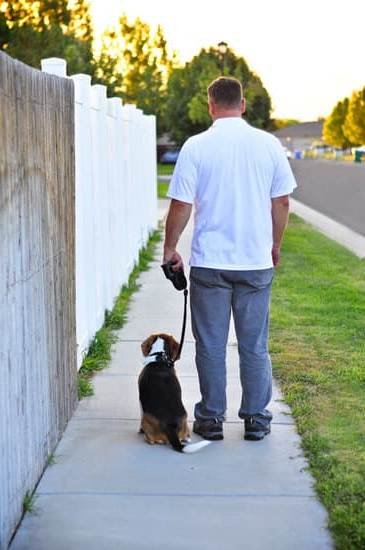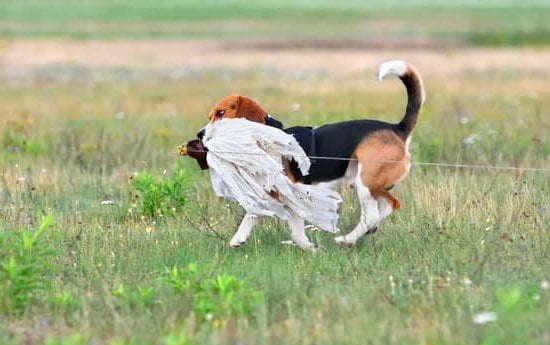Are you struggling with a dog that exhibits resource guarding behavior? Learning how to train your dog not to resource guard is essential for their well-being and the safety of those around them. Resource guarding is a natural instinct in dogs, but it can become problematic if not addressed properly. In this article, we will explore the behavior of resource guarding, its potential causes, and effective training methods to modify this behavior.
Understanding resource guarding is crucial in addressing this behavior effectively. In this section, we will delve into the reasons behind resource guarding and how it manifests in dogs. By gaining insight into why dogs exhibit this behavior, we can better tailor our training approach to address the root cause.
Identifying the signs of resource guarding is the first step in tackling this issue. This section will provide guidance on recognizing the body language and behaviors that indicate resource guarding in dogs. By being able to identify these signs early on, dog owners can take proactive steps in addressing the behavior before it escalates.
Identifying Signs of Resource Guarding
Resource guarding can manifest in various ways, and it is important for dog owners to be able to recognize the signs of this behavior in their pets. Dogs may exhibit resource guarding towards food, toys, or even specific locations within the home. Understanding and being able to identify these signs is crucial in addressing and modifying this behavior.
Body Language and Behavior
One common sign of resource guarding is when a dog displays tense body language while in possession of a particular item. This can include stiffening of the body, growling, snarling, or even snapping when approached by humans or other animals.
Additionally, some dogs may actively try to hide their possessions or move them to a different location as a way of protecting their resources. It is essential for pet owners to be observant of these behaviors in order to address the issue effectively.
Recognizing Triggers
In addition to the physical and vocal cues mentioned above, it is also important for dog owners to recognize the specific triggers that elicit resource guarding behavior in their pets. This could be related to certain types of food, toys, specific locations within the home, or even interactions with other animals. By identifying these triggers, pet owners can begin implementing strategies to modify their dog’s response through training and positive reinforcement.
Addressing Resource Guarding
Understanding and being able to identify resource guarding behaviors in dogs is the first step towards addressing this issue. Once these behaviors are recognized, pet owners can then take proactive steps towards modifying their dog’s response through positive reinforcement training methods and behavior modification plans. By understanding the signs of resource guarding, pet owners can work towards helping their dogs feel more secure and comfortable in sharing resources with humans and other pets.
By recognizing signs of resource guarding in dogs how you train your dog not to resource guard becomes much easier by approaching training with a clear understanding of your dog’s specific needs.
The Importance of Proper Training
Resource guarding in dogs can lead to a variety of behavioral issues, and it is crucial for pet owners to address this behavior promptly. Failure to do so can result in aggression towards humans or other animals, making the dog difficult to manage and potentially dangerous. Understanding the importance of proper training in addressing resource guarding behavior is essential for ensuring a harmonious relationship between pets and their owners.
Preventing Escalation of Aggression
One of the key reasons why proper training is essential in addressing resource guarding behavior is to prevent the escalation of aggression in dogs. Resource guarding can start with mild signs such as growling or showing stiff body language when approached while consuming food or regarding a toy, but without intervention, these behaviors can progress to more serious forms of aggression such as snapping or biting.
With the right training methods, pet owners can effectively modify their dog’s behavior and prevent aggressive tendencies from becoming ingrained.
Promoting a Safe Environment
Properly addressing resource guarding behavior also helps promote a safe environment for both the dog and its human companions. Resource guarding can create tension and conflict within households, leading to stress and anxiety for all involved. By implementing training techniques that reduce or eliminate resource guarding tendencies, pet owners can create a safer and more relaxed atmosphere at home, minimizing the risk of conflicts or injuries related to this behavior.
Building Trust and Strengthening the Bond
Additionally, addressing resource guarding through proper training allows pet owners to build trust with their dogs and strengthen their bond. When dogs understand that resources will not be taken away from them forcefully, they are more likely to feel secure and exhibit relaxed behaviors around food, toys, or other items they consider valuable. This contributes to a healthier relationship between pets and their owners based on mutual respect, trust, and understanding.
Positive Reinforcement Training Methods
Resource guarding is a common behavior in dogs, where they exhibit protective or aggressive behaviors when it comes to their possessions such as food, toys, or sleeping areas. It is important for dog owners to understand this behavior and its potential causes in order to address it effectively. Resource guarding can stem from a dog’s natural instinct to protect valuable resources for survival, or it may develop due to past experiences or environmental factors.
To train your dog not to resource guard, positive reinforcement training methods can be highly effective. This approach focuses on rewarding desirable behavior rather than punishing undesirable behavior. This helps create a positive association with the training process and encourages the dog to exhibit the desired behavior willingly. Through positive reinforcement, dogs learn that good things happen when they display non-guarding behaviors, such as allowing someone to touch their food bowl or take away a toy without reacting aggressively.
One method of positive reinforcement training to modify resource guarding behavior is using high-value treats as rewards for the dog’s cooperation. For example, when the dog allows you to approach their food bowl while eating without showing signs of aggression, immediately give them a tasty treat as a reward.
This helps shift the dog’s mindset from feeling threatened by approaching humans to associating their presence with positive outcomes. Consistency and patience are key when using positive reinforcement techniques, as changing ingrained behaviors takes time and repetition.
| Positive Reinforcement Training Methods | Explaining the Use of Positive Reinforcement Techniques to Modify Resource Guarding Behavior |
|---|---|
| Positive association with training process | Rewards desirable behavior instead of punishing undesirable behavior |
| High-value treats used as rewards | Rewarding cooperation when allowing approach without aggression |
Desensitization and Counterconditioning
Resource guarding is a common behavior in dogs, but it can be concerning and potentially dangerous if not addressed properly. Desensitization and counterconditioning are essential techniques for modifying resource guarding behavior in dogs. By slowly exposing the dog to triggers and changing their emotional response, pet owners can effectively manage and reduce resource guarding tendencies.
One effective method for desensitizing a dog to triggers is through gradual exposure. This involves exposing the dog to the trigger at a distance where they do not display any signs of resource guarding. Over time, the trigger is then gradually brought closer as the dog becomes more comfortable and relaxed with its presence. This process helps the dog learn that the trigger is not a threat and does not need to be guarded.
Counterconditioning goes hand in hand with desensitization by changing the dog’s emotional response to the trigger. This technique involves pairing the presence of the trigger with something positive, such as treats or praise. For example, if a dog resource guards food, they can be taught that when someone approaches their bowl, they will receive an even better treat or reward instead of feeling threatened.
In addition to desensitization and counterconditioning, it’s important to create a safe environment for training sessions. Identifying and removing potential triggers for resource guarding, such as high-value items or limited resources, can help prevent situations that may provoke the behavior.
By combining these methods with consistency and patience, pet owners can effectively train their dogs not to resource guard. If you’re wondering how to train your dog not to resource guard, these techniques are essential tools for successfully modifying this behavior in your furry friend.
Implementing Behavior Modification Plan
When it comes to addressing resource guarding behavior in dogs, creating a behavior modification plan is essential. By following a step-by-step guide, you can systematically work towards reducing and ultimately eliminating this behavior in your canine companion. Here are some key steps to consider when implementing a behavior modification plan:
1. Identify Triggers: The first step in addressing resource guarding is to identify the specific triggers that provoke this behavior in your dog. Whether it’s food, toys, or other items, understanding what sets off the guarding instinct is crucial in developing a targeted training plan.
2. Establish Trust: Building trust with your dog is imperative in any training process. Spend time bonding with your pet through positive interactions such as playtime and obedience training. This will help create a strong foundation for the behavior modification plan.
3. Gradual Desensitization: One effective approach in modifying resource guarding behavior is gradual desensitization. This involves exposing your dog to the trigger item at a distance where they don’t exhibit guarding behaviors and then gradually decreasing the distance over time.
By following these steps and incorporating positive reinforcement techniques, you can effectively address resource guarding behavior in your dog and promote a healthier relationship built on trust and understanding.
Be patient and persistent, as behavior modification takes time and consistency. Remember that seeking professional help from a certified dog trainer or behaviorist may also be beneficial, especially for severe cases of resource guarding. With dedication and the right approach, you can help your furry friend overcome their resource guarding tendencies.
Seeking Professional Help
For dog owners dealing with severe cases of resource guarding, seeking professional help from a certified dog trainer or behaviorist is often the best course of action. These experts have the knowledge and experience to assess the root causes of the behavior and develop a customized training plan to address it effectively. A professional can also provide guidance and support to ensure that the training process is conducted in a safe and effective manner.
Professional dog trainers and behaviorists are equipped with the expertise to understand why a dog may be exhibiting resource guarding behavior. They can assess any underlying issues such as fear, anxiety, or previous negative experiences that may contribute to the behavior. By identifying these factors, they can tailor a behavior modification plan that addresses not only the symptoms of resource guarding but also its underlying causes.
Consulting a professional for severe resource guarding cases also ensures that the training approach is appropriate for the individual dog. Behavior modification plans should be personalized to consider the dog’s temperament, past experiences, and overall well-being. Additionally, professionals can provide ongoing support and guidance, making adjustments to the training plan as needed based on the dog’s progress.
When dealing with severe cases of resource guarding, it is crucial to seek professional help early on to prevent escalation of the behavior. Professional trainers and behaviorists possess a comprehensive understanding of canine behavior and are well-equipped to handle complex cases of aggression or fear-based behaviors. Their expertise can make a significant difference in successfully modifying resource guarding behavior in dogs.
| Professional Help | Benefits |
|---|---|
| Expert assessment of underlying causes | Personalized behavior modification plans |
| Ongoing support and guidance | Prevention of escalation in severity |
Preventing Resource Guarding in Puppies
In conclusion, understanding and addressing resource guarding behavior in dogs is crucial for maintaining a harmonious relationship with our furry companions. By recognizing the signs of resource guarding and implementing proper training methods, pet owners can effectively modify their dog’s behavior and prevent potential conflict. Positive reinforcement techniques, desensitization, and counterconditioning are valuable tools that can be used to reshape a dog’s response to triggers that may lead to resource guarding.
When it comes to preventing resource guarding in puppies, early intervention and consistent training are key. By creating a positive environment during mealtimes and teaching puppies to share their belongings from a young age, pet owners can set the foundation for healthy behaviors. It is important to establish clear rules and boundaries while also providing plenty of positive reinforcement for good behavior.
For pet owners who are struggling with severe cases of resource guarding, seeking professional help from a reputable dog trainer or behaviorist is highly recommended. These experts can offer personalized guidance and support to address challenging behaviors in dogs. Ultimately, with patience, consistency, and the right approach, it is possible to train your dog not to resource guard and foster a trusting bond based on mutual respect and understanding.
Frequently Asked Questions
Can Dogs Be Trained Out of Resource Guarding?
Dogs can be trained out of resource guarding through positive reinforcement and desensitization techniques. This involves teaching the dog that giving up a resource results in something even better, like a high-value treat.
How Do I Stop My Dog From Resource Guarding Me?
To stop your dog from resource guarding you, it’s important to avoid direct confrontations and instead focus on creating positive associations with your presence. This can involve rewarding the dog for calm behavior around you and gradually increasing the level of interaction.
What Causes a Dog to Resource Guard a Person?
Several factors can cause a dog to resource guard a person, including fear, insecurity, past negative experiences, or simply a lack of proper socialization and training. It’s important to address the root cause in order to effectively deal with this behavior.

Welcome to the blog! I am a professional dog trainer and have been working with dogs for many years. In this blog, I will be discussing various topics related to dog training, including tips, tricks, and advice. I hope you find this information helpful and informative. Thanks for reading!





